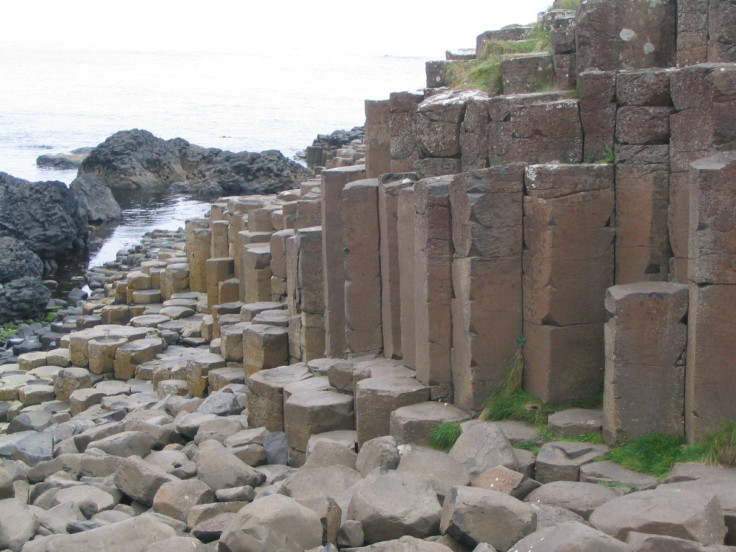As Languages Disappear, So Does Our Priceless Culture And Heritage

From the time I was a young boy, I enjoyed reading ancient myths and legends. I devoured the tales of ancient Greece, ancient Rome, ancient India, as well as the Celtic and Norse legends of antiquity. These stories were not only wildly entertaining, and exciting, they also inspired me to learn more about the real-life histories of these magical, faraway lands.
One of my favorite myths is about how the “Giant's Causeway,” one of the world's most spectacular natural geologic formations, came to exist. Located in County Antrim in Northern Ireland, the Causeway comprises some 40,000 columns (some of which are nearly 40 feet high) made of basalt, linked to one another and disappearing like steps into the sea -- the beautiful product of a volcanic eruption eons ago.
Having seen the Causeway in person, I can attest to its awe-inspiring and breathtaking beauty.
According to ancient Irish myths and legends, the Causeway was man-made, or perhaps superhuman-made. One of mythic Ireland's greatest figures, a king named Fionn mac Cumhaill -- sometimes known as Finn MacCool -- built the Causeway to allow a Scottish giant named Benandonner to cross the waters, after having challenged the Irishman to a fight. The huge Scotsman apparently couldn't swim; I should point out that Fionn was also a giant, otherwise it wouldn't have been a fair fight.
Indeed, similar basalt columns grace the Scottish isle of Staffa on the other side of water, lending some credence to this grand tale.
As with most myths from ancient times, there are various versions of what happened next. One yarn declared that Fionn killed the Scots' behemoth in battle. Another proffers a vastly different take: Upon seeing how truly massive in size Benandonner was, Fionn -- in a very unheroic posture -- fled to his wife Una, who dressed up her husband as an infant! But this trick worked, for when Benandonner laid eyes on such a large baby, he panicked and retreated, fearing the size of adults in Ireland. As he fled, Benandonner damaged the stone steps in his wake to prevent the super-giant Fionn from tracking him back into Scotland.
Fionn, who might be likened to Hercules of ancient Greek mythology for his amazing strength and miraculous feats, was not always depicted as a giant but usually was credited with having magical, superhuman powers.
Fionn is also credited with a number of other remarkable feats. One tale claims he once grabbed up some soil and hurled it toward Scotland but missed his target and the mass of dirt landed in the sea, thereby creating the Isle of Man. (Having removed that rather large clump of dirt from Ulster's real estate resulted in the lake called Lough Neagh in its void.)
I realize that the Giant Causeway, Isle of Man, Lough Neagh and many other parts of the natural world were not created by temperamental giants or gods from pre-history (probably), but I still think these fanciful tales from our remote ancestors form a priceless and irreplaceable part of our global human heritage.
The myths of the ancient world survive to the present day and live among us. For example, with respect to Fionn mac Cumaill, the name of one of Ireland's current dominant political parties, the Fianna Fáil, was founded in 1926 by Eamon de Valera and inspired by the long-ago giant. Fianna Fáil translates to "soldiers of destiny," but the Fianna is also the name of Fionn's army of warriors. De Valera -- the future prime minister and probably the most prominent Irish political figure of the 20th century -- clearly wished to draw a link between modern-day Irish nationalists and a mythical hero from centuries in the past.
But I sense that young people have little or no interest in such esoteric subjects as myths and legends. In our depressingly globalized world, where commerce trumps all, regional cultures and languages are dying. Who will be left to share the literature and epic tales of our glorious past? A few elderly specialists and academics whose books few people read?
Moreover, the language of Fionn and his people, Gaelic, is dying out, even in Ireland itself. (Naturally, I had to read the story of Fionn in the English language that has dominated the world for at least 200 years).
According to a report by the Whole Earth Catalogue, linguists predict that by the year 2050, at least half of the world’s 6,000 languages in existence today will be dead.
“Languages are becoming extinct at twice the rate of endangered mammals and four times the rate of endangered birds,” the report warned. “If this trend continues, the world of the future could be dominated by a dozen or fewer languages.”
Michael Krauss, director of the Alaska Native Language Center, suggested that 20-40 percent of languages are “already moribund” and only 5-10 percent are "safe" in the sense that they are widely spoken or have official status. Indeed, two of the most influential languages of the ancient world, Sanskrit and Latin, are virtually on their deathbeds.
With respect to Fionn, the Irish government is making efforts to preserve its own ancient Gaelic tongue, but it is likely fighting a losing battle. Once we lose these priceless legacies of our past, our world will be a much poorer place indeed -- and the Giant’s Causeway will merely be viewed as a pile of rocks.
© Copyright IBTimes 2024. All rights reserved.











